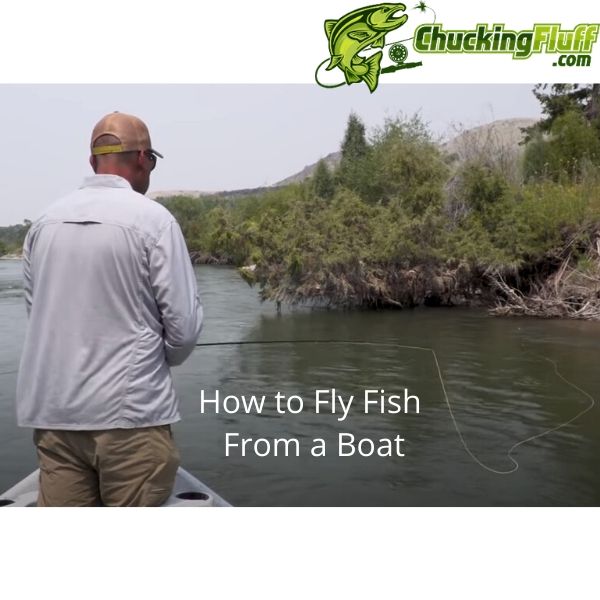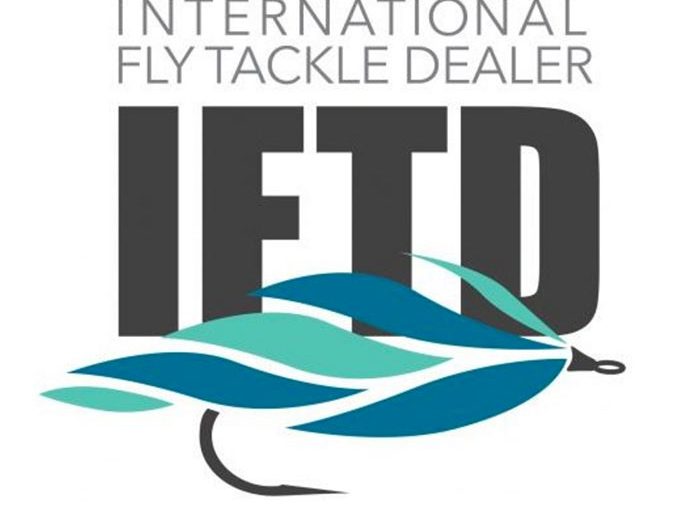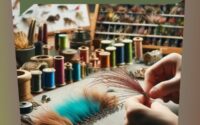| Disclosure: Just to be open and honest the buttons and links you click on in the website will in most cases take you to another website where you can purchase the products I am reviewing. As an Amazon Associate I earn from qualifying purchases. |
How to Fly Fish from a Boat – Tips for a Newbie.
A fervent angler will tell you that there is nothing like bad weather. There are bad tactics, bad products, and poor skills. While some anglers wade and some fish from the shores or banks, others choose to have time afloat. Regardless of how successful or unlucky the day is, rowing or drifting is fulfilling in its own way. Boat fishing is gaining popularity, especially in larger water bodies where you can’t wade of the shores are too overgrown for smooth casting.
Fly fishing from a boat will offer more advantages to an angler fishing in reservoirs or large waters. You can cover a wide area that is unreachable without being afloat. Another upside is the higher chances of landing impressive catches if you fish on the fertile areas with drogue long and slow drifts. For a novice, it might seem a daunting prospect but after knowing how to handle the anchors, engines, oars, drogues, and the entire boat, it gets less complicated and more fun.

Tips for Fly Fishing from a Boat
Be Highly Experienced
Very few people will learn rowing ‘on the fly’. As a new angler who wants to experience fishing while floating, you will most likely get a guide or get an invite from a friend with more experience. You don’t have to get embarrassed if you can fish and not drift a boat. You aren’t missing anything. In fact, the rower will be the one on the losing end during the session with you.
Gambling with a boat when unknowledgeable means putting yourself at a high risk of drowning. If you don’t, then the first experience will not be one to discuss anytime. New anglers and those with no boating experience should seek highly experienced guides for help.
Release all the Tension and Enjoy
The construction of drift boats is unique and targets comfort and functionality. Being in the boat means you won’t wade, walk on the boulders or hike. Place your knees carefully in the standing platform and seat on the cushioned swivel seats. If you’d want to stand, ensure you retain your feet in the platform.
Long Casts? Yes!
An experienced rower will head closer to the run you choose to fish. The run is usually up against the bank. While some are casting from the boats, they rarely take the casts past 20 feet. The die-hards and experimenters will take chances at rising fish with casts longer than 40 feet and succeed. As you continue to drift down a river, the casts become shorter. When upstream, don’t limit yourself. Cast it as long as you know it will be comfortable.
Casting in Tighter Spaces
Refrain from hooking your rower. If you are a right-handed buddy and are casting to your left side as you stand in the front area of the boat or are casting to your right as you stand in the rear of the boat, this isn’t a problem. Or else, you have to keep the line high and very straight above your head as your casting arm or hand is on the rower’s side. It might feel hectic and unmanageable in the first days. With practice and consistency, you will master the skill. If it is your first time to fly fish from a boat, the guide should be patient to help.
Maintain the Line in your Zone
What is your zone? This is the space you are fishing in. it is either behind you or in front of you. If you are at the front of the boat and casting from there, feel free to cast either to your right or to your left. You can also cast slightly ahead of your drift boat mostly if you want to cast into slower currents. If you are standing in the rear of the boat, the casting must be slightly behind your boat. Doing with will counter the chances of tangling your fly line in another angler’s line or in the oars.
Fly Fishing with a Partner at the Front? Sharing is Caring
Most of the guides tell the anglers when to switch. The angler at the front has quite an advantage and it is a good thing to share. Fly fishing at the front means that the fish in whichever run will see and get attracted to your fly. The guide, on the other hand, is paying attention to you and more focus goes to maneuvering the boat’s front section to ensure that you are in an excellent position to fish a certain run.
On some days or sessions, the angler in the rear of the boat will perform well or exemplarily. This means that you can have impressive catches from whichever spot.
Your Fly Should be in the Water
You can make one shot at the perfect run only if you have an amazing rower who will agree to back up and give you a chance to try again. In most instances, you can have a good and long drift because the fly travels almost at an equal speed to that of the drift boat. If you keep on making false casts, you keep on missing the fish. Still, you are at a higher chance of snagging your rower.
What if you get snagged?
How do you get snagged? It will happen if you are trying to throw the fly tightly up and against the riverbank-this is ordinarily what you’d want to do. Sometimes, you get snagged if getting the streamers or nymphs deeper enough. Most of the time, the rower will circle back to allow you to retrieve the fly. You will have to loosen the drag if need be. If the chances of retrieving your fly are minimal, point the fly rod directly to the snag. What will break will be your fly line and not the rod tip.
Don’t Allow the Fish to go underneath the Boat
Some anglers tell experiences of letting monster trout running underneath the boat. Others break their rods and others are lucky not to. If you hook a fish, especially a monster, stage a fight like you would if you were at the river bank or were wading. Ensure that pulling is from one side to the other side. The moment it gets closer, the guide or your buddy will net it using a long-handled fishnet before it gets closer to the boat.
Avoid Stopping to Wade in Promising Runs
Among the upsides of fly fishing when afloat is the chance to stop and the fish runs that could be inaccessible from the banks. The hikes could be longer or the existence of private property that will need crossing before reaching the river. Ensure that you alert your buddies or guide that you’d like to stop and fish the runs.
Safety when Fly Fishing from a Boat
Before getting on a drift boat, you need to wear a high-quality lifejacket. The rules and regulations of fishing in state waters require and insist on anyone going afloat to have a lifejacket. In fact, enforcement is vigorous. Even without these rules, we advise that you have one on when drifting, rowing, or fly fishing from a boat. This is to ensure that you can be visible in case of an accident and quickly get rescued before more damage occurs.
Lifejackets have enough features for buoyancy. Have a tool lanyard to avoid finding it difficult to get your tools from the gear attachment points. The lanyard will keep all your tools within your neck area.
Pack the best-polarized sunglasses and eye protection. Strong winds can push double-hooked or weighted flies closer to your head. Without protection, an eye injury mightn’t be something you’d wish again. If you can get a good hat for sun protection, the better.
Note:
Novice boat anglers often face the problem of broken rod tips. Ensure that all the rod tips are in the boat and shouldn’t protrude over the edge of the boat. This happens especially as you leave the dock. One bump with the next boat if you are in a crowded area and you burst an expensive Orvis, Loomis, or Sage.
Crucial Signs and What to Do at such Points
Shallow Beds
Shallow beds are the prime bussing beds flooded with fish feeding on chironomids and other flies. Stay far from the shores for easy casting. Study the bank contours to estimate water depths. Feeding swans will indicate shallow depths. To find exact depths, ensure that you improvise a tape and a weight to get exact measurements.
In these areas use smaller nymphs and fish with a static strategy or a slower retrieve with a floating line. Make shorter casts to avoid spooking fish in shallow depths. Dry fly fishing will do well in the shallow bays.
The Drop-offs
The spots with ledges as a result of sand and silt build-up are called drop-offs. You can virtually spot these points. Find the bottom then the point where the spot darkens suddenly and drops away. They are easily visible when it is brighter. You can see the shallow bottom as it protrudes out and its darker sections down the side. Trout anglers can target these areas. Head near the dam walls also where fast depths are vital.
Use sinking lines at these points and pair the line with a booby if targeting trout. Casting should be over the drop-offs. You can slowly fish the booby over that ledge onto shallow waters and you can anticipate for a take. You can try nymphs over the ledges too.
Points
This is the confluence of two currents and the action deposits food waiting for fish to feed on. Find natural points on land and approach the section from 80 yards or thereabout to avoid spooking feeding fish. Also, avoid making straight drifts onto that point instead drift across the area. In the end, you will be fishing the two ledges as you drift across and approach it. This means doubling the chances. Try using nymphs here.
Wind Lanes
On some blustery days, it can form across the whole length of the water body. Fish that love to feed on the surface will frequent wind lanes. At the edges of these lanes, there are swarms of insects. Fish will cruise along bubbling and mopping all of them. Avoid drifting down the mid-section of the lane. This will spook these buddies. We advise drifting parallel to these lanes and casting in the edges. This will intercept fish. Dries will do well here. Color matching to surface insects will increase your chances of landing a good one.
Deep Waters
Fish will go underwater on bright sunny days to escape the glare from the sun. A sinking line will serve you well here. As the line sinks, it shouldn’t snag the bottom and keep it in for about 40 seconds or thereabout when it is hotter. Your fly should be in the cool zone for the longest time. You need to use a slow lifting tactic in the end.
What’s the Choice of Equipment?
A rod longer than 9 feet and line weight of 6 or 7wt will be ideal when heading float fishing from a boat. Accidents often occur and we advise that you carry a spare fly rod. We have a compilation of a few of the best rods for fly fishing from a drift boat that you can check out.
For the fly line, you need fly lines that will be useful and not make you feel under-gunned. Some of the lines that are highly recommended are:
- Floating lines
- Intermediate fly lines
- DI3
- DI5
- DI7
Nets are usually assumed by many boating anglers. The good thing about carrying a net is that you can net that buddy as it approaches the boat and prevents it from going underneath and breaking your stick. You can net fish while seated with the help of a 2 or 2.5m net pole even when fishing using long leaders.
Waterproofing is key regardless of the season. Vary your gear depending on the season and your areas of fishing. Ensure you check with your fishery on the regulations on gear when fishing from a boat. Ensure that you have the right footgear on as no one wants you in the lake. Neither does the fish-but they won’t mind a generous feast.
Warning!!!
Don’t Drink and Float. Don’t Drink and Row. Don’t Drink and Fish from a Boat. We need you as much as we need fish.



Hi,
From my online research about the topic how to fly fish from a boat tips for a newbie, When learning how to fly fish, remember that this method of fishing uses techniques that are more challenging than other types of fishing, with fly fishing the idea is to catch fish by getting them to bite on a imitation of bug or bait fish on or just below the water, if you are a newbie best to begin by understanding fly casting basic like your equipment needs, reel, weighed line and some artificial flies.
Thanks for sharing.
Aluko.
This does bring back a LOT of memories. My dad is an avid fly fisher, or was in his younger days. I spent my childhood fishing, camping, hiking, fishing, and more fishing. We would fly fish from the boat, from the shore, in a river, lake or ocean. It is great fun and I always thought it was better from the boat as you could go where the fish were.
Using a boat to fly fish does make it easy to get to the different areas of the river or lake. However, fly fishing from a boat in a river with a fast current can be difficult as you have to be on your game to cast to the bank and keep in touch with your line as the boat moves. Very exciting though.